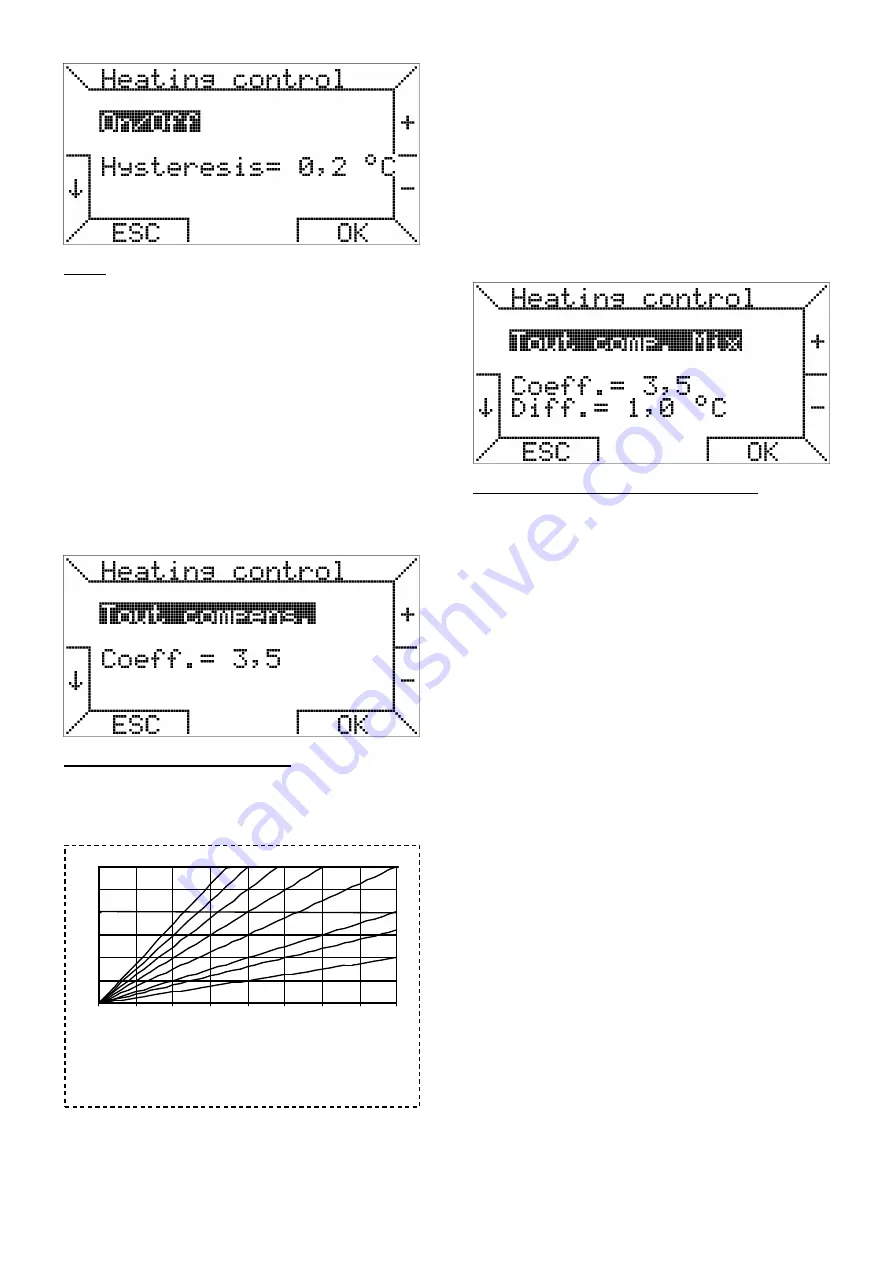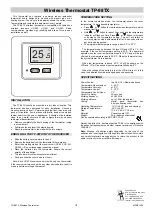
8/13
21689_r03
On/Off
This mode is similar to that used by the thermostats with
clean contact.
Set the hysteresis value, between 0 and 1 ° C (defau lt 0.2 °
C), the temperature control takes place according to the
following rule:
if
T
a
≤
T
ap
- hysteresis
then
T
i
= max
if
T
a
≥
T
ap
+ hysteresis
then
T
i
= 0
when
T
i
circuit heating setpoint.
T
ap
room temperature setpoint.
T
a
room temperature measured.
offset
correction value (settable),
max
maximum circuit heating setpoint (set by the
user).
Outside temperature compensation
If the boiler is equipped for measuring the outside
temperature (Tout), you can choose the weather
compensation as a mode of thermoregulation.
In this case you can set the coefficient of dispersion hc
(heating curves) for external temperature compensation:
the range is 0.5 to 3.5.
The chronothermostat calculates the setpoint temperature
of the circuit heating according to the formula:
T
i
= ( T
ap
– T
e
) · hc + T
ap
when
T
i
circuit heating setpoint.
T
ap
room temperature setpoint.
T
e
external temperature measured
hc
dispersion coefficient
In this formula correspond to the curves shown in Fig. 2.
Outside temperature compensation with mix
This method of temperature control is the same climatic
compensation just described with a correction dependent
on the ambient temperature.
The ambient temperature acts as a "feedback" to improve
environmental comfort.
To avoid that the ambient temperature deviates too much
from the desired value, it is possible to set the differential d,
in a range between 0 and 5 ° C so that:
if
T
ap
– T
a
> d
then
T
i
=
max
when
T
i
circuit heating setpoint.
T
ap
room temperature setpoint.
T
a
room temperature measured.
max
maximum circuit heating setpoint (set by the
user).
d
differential (set by the user).
20
30
40
50
60
70
80
-20
-15
-10
-5
0
5
10
15
20
3,5
3
2,5
2
1,5
1
0,8
0,5
Te
Ti
[°C]
[°C]
Figure 2
Graph relative to the external temperature
compensation for various values of HC, with T
ap
=20ºC































